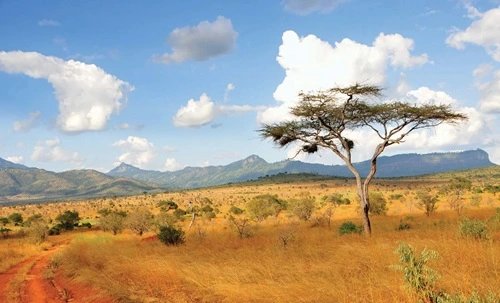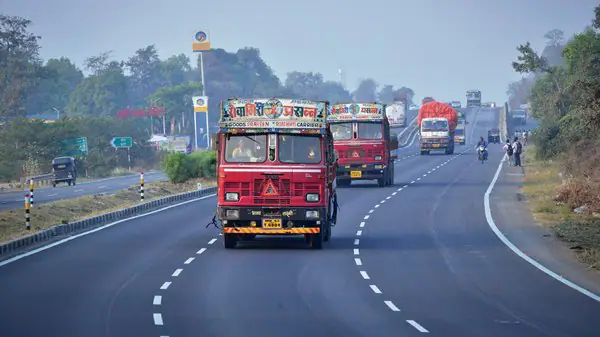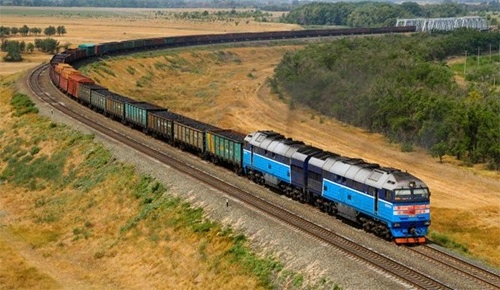Kenya is known for its breathtaking landscapes, remarkable wildlife, and rich cultural heritage. From the savannas teeming with wildlife to its stunning coastal beaches, Kenya is a land of incredible diversity and beauty. Beyond the tourist attractions, Kenya has a fascinating array of unique characteristics and cultural traditions that make it one of Africa’s most captivating destinations. Here are over 10 fun facts about Kenya that reveal what makes this East African gem so special.

1. Kenya is Home to the “Big Five”
Kenya is one of the best places in the world to see the “Big Five” animals: lions, leopards, elephants, rhinoceroses, and buffaloes. This iconic group of wildlife earned its name not because of size but because they were historically considered the most challenging animals to hunt. Today, Kenya’s national parks, including the world-famous Maasai Mara, offer safari experiences where visitors can view these magnificent animals up close in their natural habitat.
2. The Great Wildebeest Migration is One of the “New Wonders of the World”
Every year, more than 1.5 million wildebeest, along with thousands of zebras and gazelles, embark on a journey from Tanzania’s Serengeti to Kenya’s Maasai Mara in search of fresh grazing lands. This incredible migration, which usually occurs between July and October, is one of the most spectacular wildlife events on Earth. The sight of thousands of animals crossing the Mara River, braving crocodiles and other predators, has earned the Great Migration a place as one of the “New Wonders of the World.”
3. Kenya’s Capital, Nairobi, is Known as the “Safari Capital of the World”
Nairobi, Kenya’s bustling capital, is known as the “Safari Capital of the World” for a good reason. It’s one of the few cities globally that has a national park within its borders. Nairobi National Park is just a short drive from the city center and offers sightings of lions, giraffes, rhinos, and more, with the city skyline in the background. Nairobi also serves as the base for many safari companies and is a gateway for travelers exploring Kenya’s wildlife-rich landscapes.
4. Kenya Has Over 40 Unique Indigenous Tribes
Kenya is home to more than 40 different tribes, each with its own languages, customs, and traditions. Some of the most well-known tribes include the Maasai, Kikuyu, Luo, and Luhya. The Maasai, in particular, are famous for their vibrant red attire, traditional jewelry, and unique customs like the “jumping dance.” Kenyan society is a colorful blend of these distinct cultures, and each tribe contributes to the country’s cultural richness.
5. The Name “Kenya” Derives from Mount Kenya
Kenya takes its name from Mount Kenya, the second-highest mountain in Africa after Mount Kilimanjaro. Towering at 17,057 feet, Mount Kenya is a UNESCO World Heritage site and holds deep cultural significance for many of Kenya’s tribes, particularly the Kikuyu, who consider it sacred. Mount Kenya is also a popular trekking destination, attracting climbers and adventurers from around the world who are eager to reach its challenging peaks.
6. Kenya’s Flag Symbolizes the Country’s Struggle for Independence
Kenya’s flag is rich in symbolism and represents the country’s history and values. The black stripe represents the people, red symbolizes the blood shed in the fight for independence, green stands for Kenya’s lush landscape, and the white edges of the stripes represent peace and unity. At the center of the flag is a traditional Maasai shield, representing the country’s strength and defense of its freedom.
7. Kenya is a Birthplace of Long-Distance Runners
Kenya is famous for producing some of the world’s best long-distance runners, particularly from the Kalenjin tribe. The country’s athletes have set records in marathons and other long-distance events globally, thanks to a combination of high-altitude training, cultural factors, and rigorous dedication. Some of the world’s most renowned athletes, including Eliud Kipchoge, who became the first person to run a marathon in under two hours, hail from Kenya. The country has won more Olympic medals in long-distance running than any other nation.
8. Swahili is One of Kenya’s Two Official Languages
Kenya has two official languages: English and Swahili. Swahili, or Kiswahili, is widely spoken throughout East Africa and has its roots in the blending of African, Arabic, and Portuguese influences along the coastal regions. The Swahili language has beautiful expressions and proverbs and is relatively easy for English speakers to learn, with many words derived from Arabic. Words like “safari” (meaning journey) and “jumbo” (meaning hello) have even become popular internationally.
9. Kenya Has Some of the World’s Oldest Human Fossils
Kenya is known as one of the “Cradles of Mankind” because some of the oldest human fossils were discovered there. The Turkana Basin in Kenya is home to fossils of early human ancestors, including a 1.6-million-year-old skeleton known as “Turkana Boy.” This skeleton is one of the most complete early human fossils ever found and has provided scientists with essential information about human evolution. Kenya’s National Museums offer visitors a chance to learn about this ancient history through exhibits and displays.
10. Lake Victoria is Africa’s Largest Lake
Lake Victoria, located on the western border of Kenya, is Africa’s largest lake by area and the world’s second-largest freshwater lake by surface area. Shared with Uganda and Tanzania, the lake is a vital source of water, fish, and transportation for communities in the region. It’s also the primary source of the Nile River and home to a unique ecosystem that includes species of fish found nowhere else on Earth, though invasive species and environmental challenges have impacted its biodiversity.
11. Kenya is a Leader in Sustainable Tourism
Kenya has made significant strides in sustainable tourism, focusing on preserving its incredible natural resources while benefiting local communities. Many Kenyan safari lodges and camps use eco-friendly practices, and some are entirely solar-powered. Kenya also promotes conservation through national parks and private conservancies, which employ locals and protect wildlife. Popular destinations like the Maasai Mara work closely with local communities to ensure that tourism benefits them and encourages the conservation of wildlife.
12. Kenya’s Coastline is Known for Its Pristine Beaches
Kenya’s coastline along the Indian Ocean is known for its pristine, white-sand beaches and clear turquoise waters. Diani Beach, Watamu, and Malindi are some of the most popular spots, offering excellent opportunities for snorkeling, diving, and beach relaxation. These coastal areas also have a unique cultural blend of African, Arab, and Portuguese influences, particularly in places like Mombasa’s Old Town, where visitors can explore ancient forts, narrow streets, and Swahili architecture.
13. Kenya Has a Rich Coffee Culture
Coffee lovers will be thrilled to know that Kenya is one of the world’s top coffee producers, known for its high-quality, aromatic beans. Kenyan coffee is highly prized for its rich flavor, often described as bright, fruity, and full-bodied, with hints of berry and citrus. Coffee farming is a vital part of Kenya’s economy, and coffee tastings or “cuppings” are a popular activity for visitors in Nairobi. Although tea is actually more commonly consumed by Kenyans, coffee culture is growing.
14. Kenya Has One of Africa’s Largest Urban Slums
Kibera, located in Nairobi, is one of the largest urban slums in Africa. Despite its challenges, Kibera has a resilient community with small businesses, schools, and community organizations working to improve the living conditions of residents. Kibera has become a symbol of resilience and innovation, with several NGOs and community programs providing resources to improve education, healthcare, and infrastructure. Visitors can take guided tours led by locals, which offer a window into the challenges and strengths of this unique community.
15. Kenya Was the Setting for “Out of Africa”
Kenya’s stunning landscapes served as the setting for “Out of Africa,” the acclaimed memoir by Karen Blixen, which was later adapted into an Oscar-winning film starring Meryl Streep and Robert Redford. Blixen’s memoir detailed her experiences living in Kenya and working on a coffee farm, and her former home near Nairobi is now a museum. The film highlighted Kenya’s breathtaking beauty and made the country a desirable destination for movie fans and adventure-seekers alike.
From its rich cultural tapestry to its vast wildlife reserves, Kenya is a country that has something for everyone. Whether you’re exploring Nairobi’s bustling streets, trekking up Mount Kenya, or witnessing the incredible Great Migration, each experience in Kenya offers a deeper connection to its lands, people, and history. These fascinating facts about Kenya provide just a glimpse into why this East African nation is one of the most beloved travel destinations in the world. Kenya’s mix of natural beauty, cultural depth, and adventurous spirit continues to inspire visitors from around the globe.


